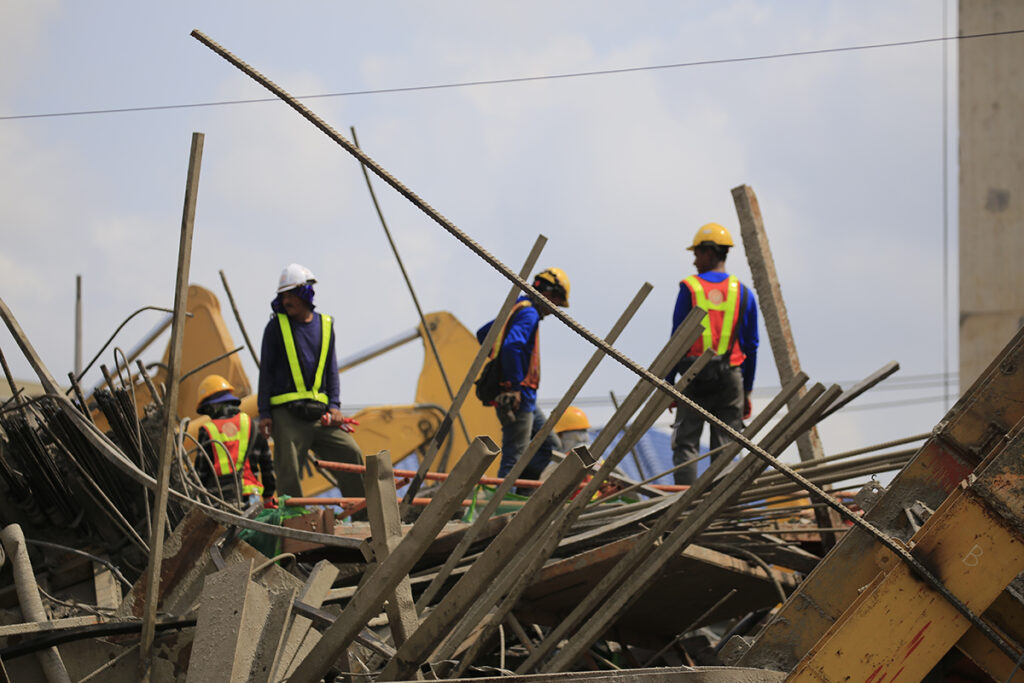Death toll surpasses 2,000 as rescuers battle severe obstacles
A devastating 7.7 magnitude earthquake that struck Myanmar on Friday has left over 2,000 people dead, adding to the suffering in a nation already grappling with civil war and widespread displacement. State media confirmed the updated toll Monday, with more than 3,900 injured and hundreds still missing. The epicenter, located near Mandalay, Myanmar’s second-largest city, unleashed destruction across central regions, flattening homes, temples, and roads and even damaging the city’s airport.
Soaring temperatures, fuel shortages, power outages, and a near-total communication breakdown in many rural areas hamper relief and rescue operations. Without heavy machinery, rescue teams have resorted to digging through rubble with bare hands or makeshift tools. The situation is especially dire in religious institutions — an estimated 200 Buddhist monks died when the U Hla Thein monastery collapsed, and some 700 Muslims perished during Friday prayers when mosques gave way.
Footage from local news sources shows places of worship across the region reduced to debris. Tun Kyi, a representative of the Spring Revolution Myanmar Muslim Network, said at least 60 mosques were destroyed. It remains unclear if these casualties are reflected in the official government figures. With many areas still cut off, humanitarian groups expect the toll to rise significantly.
Aid Agencies Call for Immediate and Unrestricted Access
The United Nations has warned that Myanmar’s already precarious humanitarian situation risks spiraling. Marcoluigi Corsi, the UN’s resident and humanitarian coordinator, stressed that nearly 20 million people needed aid even before the earthquake struck. Civil war, military restrictions, and logistical chaos have made large parts of the country inaccessible for relief workers.
“We don’t yet understand the full scope of the damage,” said Lauren Ellery of the International Rescue Committee. “Entire towns are reportedly destroyed, but we haven’t been able to confirm due to lack of communication.” Landslides and collapsed infrastructure have cut off many rural communities.
The World Health Organization has received reports of three hospitals destroyed and 22 partially damaged. This has highlighted a critical need for trauma care, surgical supplies, anesthetics, and psychological support. Meanwhile, Microsoft’s AI-powered satellite analysis has identified over 500 buildings with near-total destruction in Mandalay and more than 1,500 with serious damage.
Myanmar’s monsoon season looms just weeks away, adding urgency to the crisis. Displaced families have resorted to sleeping outside, either due to destroyed homes or fear of aftershocks. The coming rains will make shelter and sanitation even more pressing concerns.
Regional and International Efforts Ramp up Despite Internal Turmoil
Since the military seized control from Aung San Suu Kyi’s elected government in 2021, Myanmar has been locked in a brutal civil conflict. Over 3 million people have been displaced, and government forces have lost control of large parts of the country. Some resistance groups declare that fighting continues despite limited ceasefires, further complicating rescue operations.
Despite the chaos, international support is beginning to reach Myanmar. Rescue teams from India, China, Russia, and several Southeast Asian nations have arrived. On Monday, Indian workers used jackhammers to search through debris in Mandalay, recovering bodies from collapsed buildings.
The European Union, the United Kingdom, Australia, South Korea, and others have pledged millions in aid. The U.S. Embassy in Myanmar has committed up to $2 million in assistance via local partners, even as the U.S. Agency for International Development faces deep staffing cuts. A small American team was also sent to neighboring Thailand, which was affected by aftershocks.
In Bangkok, where 18 people were killed and dozens remain missing following the collapse of a high-rise construction site, rescue teams continue working. Onlookers were asked to remain silent as machines listened for signs of life. Families, gripped by uncertainty, waited for news. “A part of me still hopes they will survive,” said Naruemon Thonglek, whose partner is among the missing.
With infrastructure decimated, remote villages unreachable, and tensions still running high, Myanmar’s road to recovery looks long and uncertain. The earthquake has compounded the country’s humanitarian catastrophe and exposed the fragility of a nation struggling to hold itself together.



